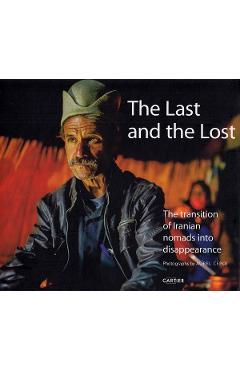
The Last and the Lost | Aurel Cepoi
The stews and the mesmerizing instrumental music took over our senses. We'd talked about it taking such a trip over the years, but covering her head had always been an argument against such an adventure. And yet, on that particular evening, the Persian smells and sounds seemed to convince her to take the leap. ,,I'm going," she said. It's a country with beautiful places and open and hospitable people. I have never met anywhere in the world people taking out for a walk their caged birds. Beautiful. Or people asking you over and over again if we are enjoying ourselves, if we are taken good care of, or constantly attempting to feed us or pay for our food, just like that, because we are the guests. Then we spent the afternoon with Mojtaba, a nomad from Hamseh tribe. Slowly, I learned more about the nomads from Iran. The idea to document their changing life came up, of course. After a brief search through local bookstores and the Internet I saw books showing staged nomadic, idyllic pictures, smiling faces. No regime in the world wants to show poor and struggling citizens. Iran is no exception. That is how I came up with the idea and visited Iran four more times. Fifteen thousand kilometers throughout Iran staying with ten tribes, many of them losing their ways or already settled. Still, most nomads are migrating to this day. This is how this book came to be, as an essence of the experiences lived in Iran in search of the black chador: the true nomadic tent from the black wool. There are about one million nomads remaining in Iran, unique in the world. Twice a year one million people load their belongings on cars or donkeys and travel, along with their animals, 300-400 kilometers between summer and winter locations. A life at the limit of survival, at the mercy of nature but also of dictated by climate, technology or education opportunities. I decided to layout the pictures in the book exactly as I met the nomads throughout my travels: never knowing when they will get in my way. These are the pictures that show the real life, with all of their joys and sorrows and daily struggles of survival. And their life is sometimes a combination of Middle Ages and modern technology. Solar panels, primary schools following the nomads, cars or weddings in restaurants. The process of this life disappearing is inevitable and what the Shah wanted to do 50 years ago is happening by itself. And with that the nomadic culture and traditions are going to the dust as well. There are 111 pictures, exactly how many steps are at the entrance of Persepolis, a holy place for Iranians, regardless of ethnic group, political inclinations or place of residence.The current pandemic will only speed up the settling of nomads adding pressure along regional conflicts, endless droughts and poor governance. My thoughts are with each of the people I met who shared the last...
49.00 Lei în magazinul Carturesti



